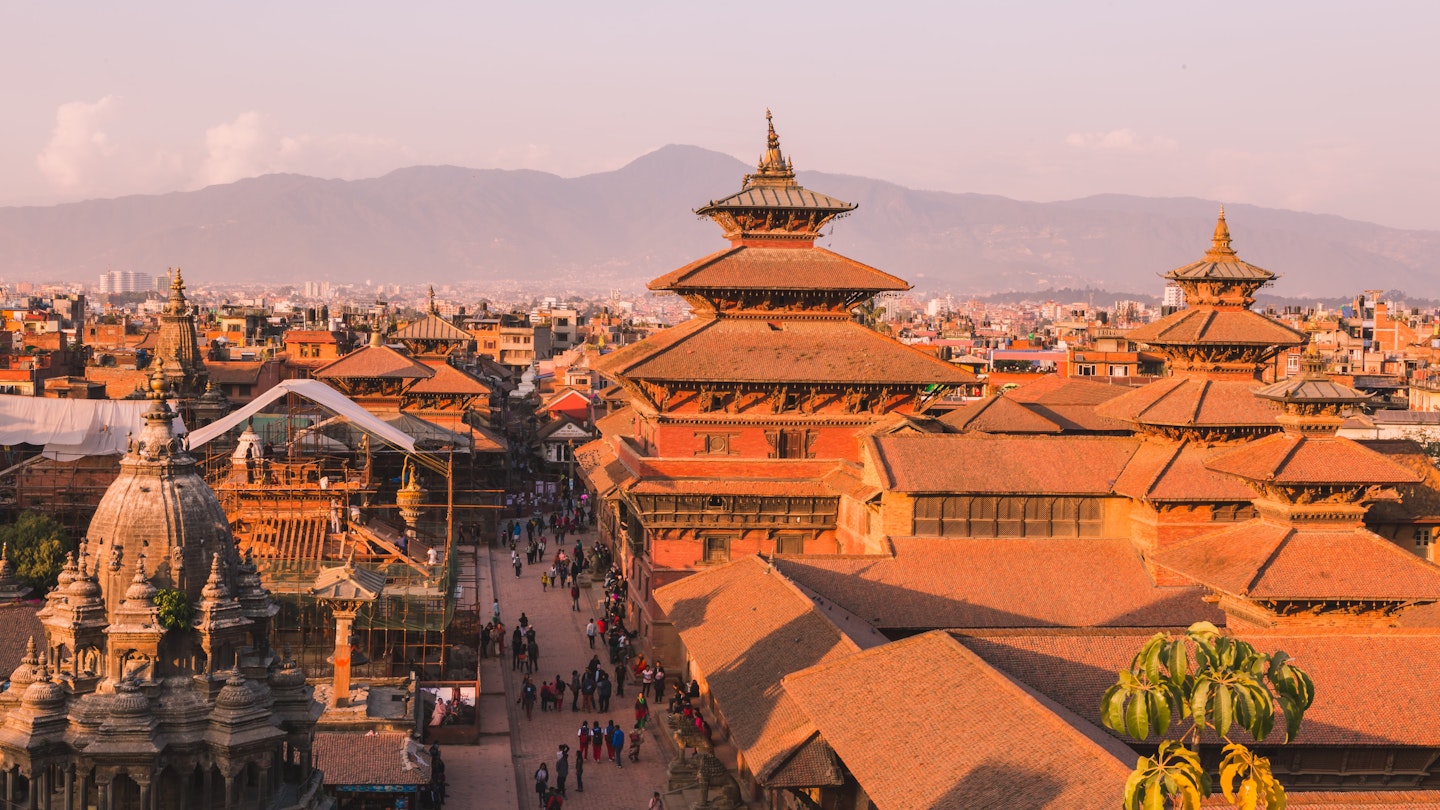Budget Travel in Nepal
Nepal is a great-value destination for travelers at any budget level. From independent backpackers solo-hiking Annapurna to luxurious safari tent lodges in Chitwan and Bardia National Parks, you’ll get more in Nepal for any given budget than in most popular tourism destinations. Kathmandu has had a strong budget-travel scene since the Hippie Trail era of the 1970s, expanding to include cities and trekking routes throughout the country.
Although prices are no longer what they were in the ’70s, Nepal remains an affordable destination, offering plenty of value for visitors who follow these budget tips.
A Guide to Daily Costs in Nepal
Hostel bed: from Rs 400
Basic room for two: from Rs 1500
Public bus Kathmandu to Pokhara: from Rs 800
Tourist bus Kathmandu to Pokhara: from Rs 1300
Espresso-based coffee: from Rs 200
Plate of momos (dumplings): from Rs 130
Fancy dinner for two: from Rs 3300–6500
Daal bhaat (traditional Nepali dish of rice and vegetables) at a mountain lodge: from Rs 400–850
Craft beer at a Kathmandu bar: from Rs 400
Average daily cost: from Rs 2000–6700
Average cost to travel to Nepal for 2 weeks: Rs 28,000–94,000
Aim for the Shoulder Seasons: February/March and September/October
The busiest tourism seasons in Nepal are mid-October through late November and late March through April. During these peak timeframes, accommodation prices rise, and popular trekking routes can become crowded. However, visiting during the shoulder seasons offers a much more relaxed experience with lower prices across the country. You can expect discounts on mid-range hotels and guesthouses and additional perks like free charging or Wi-Fi at mountain lodges. The occasional rainy day might occur, but a well-deserved rest day is always welcome after a long trek.
Walk Away from Kathmandu Airport
You came to Nepal for walking, right? Taxis at Kathmandu airport often quote unreasonably high prices. For a better deal, simply walk approximately 80 meters (260 feet) down to Ring Road. There, you’ll find more reasonable taxi rates, costing around Rs 600 to the popular Thamel neighborhood. Alternatively, consider public transportation to your destination within the city. If you’re not keen on this, many hotels arrange fixed-price or complimentary transfers for guests staying multiple nights.
Get Around Town Using Pathao and InDrive
Instead of hailing a taxi off the street, utilize mobile ride-hailing apps like Pathao and InDrive. These apps provide taxis at local prices and are especially effective in Kathmandu and beyond, with InDrive being a more reliable option outside the valley.
Get Out of Thamel to Eat and Sleep
While Thamel boasts convenience for travelers seeking to stock up for long treks or arrange tours, it also comes with higher prices compared to other areas. Exploring the edges of Thamel can yield good-value accommodations—often up to 20% less than central locations—and better dining experiences elsewhere in the city.
Consider Boudhanath as an Alternate Base
The area surrounding Boudhanath Stupa offers good-value accommodations and food but in a much more relaxed atmosphere. Expect fewer crowds and a greater sense of tranquility, making it a convenient base for a pleasant stay in the city.
Extend Tickets to Kathmandu Valley’s Major Tourist Sites
Boudhanath, Patan Durbar, Kathmandu Durbar, and historic Bhaktapur are among Nepal’s most popular cultural attractions. Ticket prices range from $3 to $15, and visitors may not know that tickets can be extended on-site for reuse within a specified period. Keep your passport handy for any necessary extensions.
Eat Local, Especially when Trekking
Significant price disparities exist between Nepali and international dishes, not just in urban areas but also in trekking lodges. Daal bhaat is often the best value for hikers, providing all-you-can-eat refills of lentils and rice, which are perfect for recovering energy after long days of hiking.
Opt for the Tourist Bus Instead of the Local Option
While tourist buses may not be the cheapest option, they consistently offer more comfortable and faster journeys for just a slightly higher price. This extra cost is worthwhile compared to the frustration of local buses, allowing more time to enjoy the local delicacies like momos.
Find a Trek that Matches Your Skill Level and Go Unguided
Many popular treks in Nepal feature well-defined paths, allowing confident hikers to navigate without a guide, provided they are aware of their limits. This can enhance the trekking experience and save money.
If You Choose to Go Guided, Arrange It Once You Arrive in Nepal
Many travelers prefer the assurance of a local guide. Consider waiting until you arrive in Nepal to make arrangements. Local tour agents can recommend suitable trekking routes based on individual hiking experience, ensuring a personalized experience while saving money by avoiding resellers.
Rent Gear for Short Treks
If you’re planning a short trek but don’t want to bring extensive gear, consider renting equipment in Kathmandu or Pokhara. Expect to spend around Rs 100 per day for items like jackets or bags.
This content was first published on Mar 28, 2022, with updates on Jun 6, 2024.





